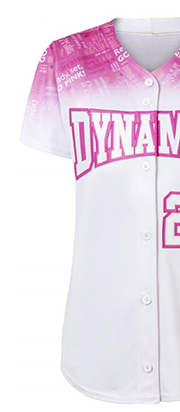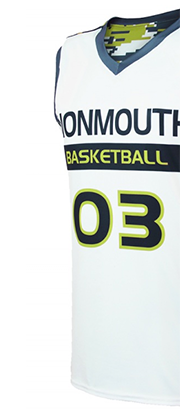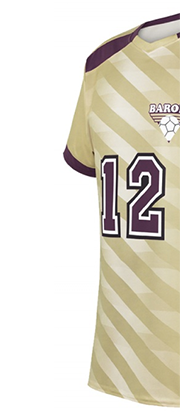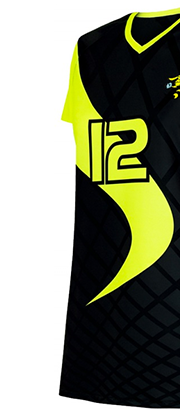Whether you’re a veteran little league baseball coach or a young parent taking over a team for the first time ever, it’s always good to read up on helpful tips to get you headed in the right direction. Winning each game and the end of season tournament is the long game you always want to consider, but the development of each child comes first and foremost. We’ll touch on the key things you’ll want to consider when you start out on your first practice and prepare for your first game this spring. Before you even order your team’s custom baseball uniforms, be sure to consider all of these aspects:
Have a Plan
First thing’s first, no matter what level of baseball you’re at, you want to come in prepared and have a plan. A common misconception is if you’re walking around with papers you don’t look like you know what you’re doing. Sometimes, sure, but for the most part you actually look organized and like you have a plan. And in reality, if you have something to refer to to keep practice in order, you are prepared. Keeping a cheat sheet of sorts around for your basic practice outline, individual assignments and practice drills is a great way to know precisely when and where certain things need to be done. You generally only have an hour or two to go through everything during a little league baseball practice, so making the most of it is key.
Having a plan and executing it are two very different things, as are having a plan and thinking you have a plan. We’ll go over some pretty key tips to help you go into your first/next little league practice with confidence.
Set Guidelines and Rules
You either already have a firm plan in place or you’re ready to learn one right here as we go. That’s part one, and part two is setting your own rules and guidelines for yourself, other coaches and the players to follow. Set the time with a perfect baseball uniform that each practice starts and ends and have that be very strict. Players that are late run laps or sprints and every rule you set in place remains constant. Setting and executing rules and regulations within the team helps build character, but more importantly, it holds everyone accountable.
Saying “it’s just little league baseball” is lazy and nothing good is ever built without a sound foundation. Keep things concrete from the very beginning and let everyone involved in the little league practices know where they stand and what is expected of them. Your practice isn’t an NFL training camp, but it also isn’t a playground where people can come and go as they please and once there can do whatever they wall. Structure is key, and you’re the coach, so make sure whatever rules you set up are followed through with every time just as you announce them to start the season.
Player Development
Notice we haven’t even talked actual little league baseball tips yet? That’s because foundation is truly so very key when dealing with young minds. Just like parents and teachers would, you need to consider that you are shaping young lives, both in a sport and in life. With every rule, coaching tip and personal move, always keep in mind that these are still young kids and that they have feelings and personal opinions. Develop the player, but don’t forget about the child.
Basic Practice Outline
1. Get Started & Warm Up
Once your rules and guidelines are in place, they’re there for everyone to know and there won’t be any surprises when someone slips up and needs to received proper punishment. Then you’re free to start off your practices as you see fit. The best way to do this is to do the same thing every time the team first meets up, to help build continuity and a routine. This can be whatever you want, but common ideas to first get started are a 10-minute jogging sessions with some basic calisthenics (push ups, jumping jacks, sit ups, etc). This gets the blood flowing and let’s everyone know right away when they get to practice that they’re coming there to work and to better their craft as little league baseball players. Obviously depending on age and level you can determine how rigorous this is to start out, but generally it’s fairly laxed and everyone works as the same pace. Pick out a team leader to guide the team in the calisthenics while you meet with the other coach(es) and gear up for the rest of the practice.
This is a good place to start and outside of a light jog and calisthenics, you don’t need much more for a warm up, as everyone will be ready to go. That being said, there are other things you can do to start each practice and if you really want, you can even alternate how you open up practices.
2. Throw Around
Throw around can be part of the warm up session or even take the place of calisthenics, but the extra movement being playing catch is good for the mind and body. It loosens players up and gets them mentally and physically prepared for the practice. Doing a throw around session separately gives them one more thing to do as part of your opening routine and it’s obviously also a huge fundamental part of little league baseball. Playing catch can be broken down to groups of two or three or you can develop a full team strategy that works on infielding. Infield drills usually cover that, however, so starting out with light tossing is suggested.
One key thing to keep in mind is that this should be ordered and monitored. For one, you can’t just have players go and throw wherever they want. Have one set of players line up on one of the white foul lines, with his partner across from him about 10 feet. This should help avoid anyone getting hit with stray balls. It’s good to have someone (or yourself) watch the tossing, too, so you can make sure no one is misbehaving, but also to watch that the technique is strong on the throws and catching.
3. Drills
The actual drills you do are completely up to you, but it probably would be a good idea to switch them up every practice. This may be the one area of your practice that completely deviates from your regular routine. That helps keep players thinking and on their toes, while every practice you’re coming up with new challenges to boost their game. One day can be offensive drills, another defensive, another simply endurance, etc. The list goes on.
Good examples of drills you can conduct are sliding, base running, bunting, pop up catching, ground ball catching and third base drills (knowing what to do and when to do it at third). Some drills you can split the team up for, and others you’ll want to keep everyone together.
4. Batting Practice
BP is a hugely important for all players to hone their swing and perfect their vision and timing at the plate. You can use tee’s, use a rotation of pitchers or even take the team to the batting cage. One way or another, they need work at the plate. A good 30 minutes is probably plenty of time to get every player a few reps at the plate and this is not an activity that takes up a lot of energy, but still has them using focus and effort to improve a key part of their skill-set. This is best done toward the middle of practice so it can both be used as a bit of a break (you can also schedule a min-break in your practices if you feel it’s needed), but it’s also obviously extremely beneficial to every player.
5. Defense
After getting some work in at the plate, it could be a good idea to next focus on defense for a good portion of practice. Obviously on offense you’re largely dealing with hitting and running, so with that already touched on earlier in practice, you’ll want to spend a good deal of time on the defensive side. Whatever you don’t already potentially cover in your selected drills portion of the practice as discussed above, you can slide in here. You can work on double plays, pitcher decisions, catcher decisions, plays from the outfield and the list goes on.
6. Scrimmage
Not every practice needs a full team scrimmage, but it never hurts to take what you learned or went through each day and put it in a full speed, live game atmosphere. You can work to schedule this in for every single practice, or you can choose special days during the week where the team will conduct a brief scrimmage, putting offensive and defensive knowledge to work. This allows you to test your little league baseball team in a game setting and see what specific individuals may need to work on.
Ending Practice
You can decide how to end your practice, but however it does end should always be similar or even exactly the same from day to day. Rounding the team together for a mini-rally at the mound to discuss your upcoming game, practice times and the like is encouraged, and this is where you can discuss specifics of the practice and anything else you need to relay to the team. Once this is over, you should have, within your predetermined rules and regulations, already set in motion for players to be responsible for cleaning up the field (picking up bats, balls, etc) and to inform their parents of pick up time and when/where/what time the next game and/or practice will be. For your first ever practice, you can use this huddle to lay down all of your rules and guidelines before and/or after the initial practice.
While everything touched on here is very important, the biggest thing of all might simply be proper communication. Make sure you’re always doing your best to effectively communicate what you expect out of parents, fellow coaches and of course, the players. When everyone is on the same page and working correctly together, you’re well on your way to building a positive (and successful) foundation.
This isn’t the end all, be all to little league practice tips, but it’s a good start to get the ball rolling. For more info on specific little league practice drills, tips and advice, be sure to check back at our blog routinely as we look to help new little league baseball coaches succeed in their first go-around this year.







